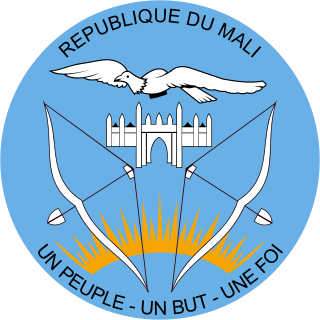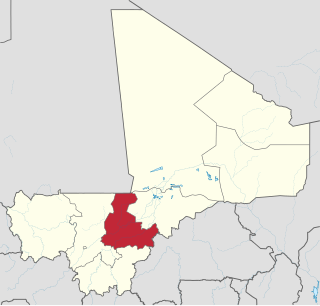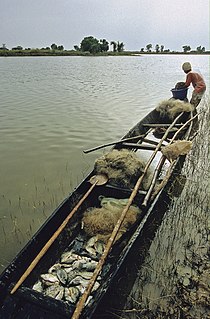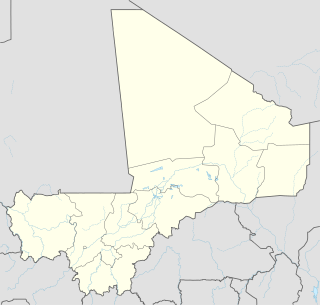| Yangasso | |
|---|---|
| Commune and town | |
| Coordinates: 13°4′N5°19′W / 13.067°N 5.317°W Coordinates: 13°4′N5°19′W / 13.067°N 5.317°W | |
| Country | |
| Region | Ségou Region |
| Cercle | Bla Cercle |
| Population (1998) | |
| • Total | 14,456 |
| Time zone | GMT (UTC+0) |
Yangasso is a small town and commune in the Cercle of Bla in the Ségou Region of southern-central Mali. As of 1998 the commune had a population of 14,456. [1]

A Commune is the third level administrative unit in Mali. Mali is divided into eight regions and one capital district (Bamako). These subdivisions bear the name of their principal city. The regions are divided into 49 Cercles. The Cercles and the district are divided into 703 Communes, with 36 Urban Communes and 667 Rural Communes, while some larger Cercles still contain Arrondissements above the Commune level, these are organisational areas with no independent power or office. Rural Communes are subdivided in Villages, while Urban Communes are subdivided into Quartier. Communes usually bear the name of their principal town. The capital, Bamako, consists of six Urban Communes. There were initially 701 communes until the Law No. 01-043 of 7 June 2001 created two new Rural Communes in the desert region in the north east of the country: Alata, Ménaka Cercle in the Gao Region and Intadjedite, Tin-Essako Cercle in the Kidal Region.

Bla Cercle is an administrative subdivision of the Ségou Region of Mali. The administrative center (chef-lieu) is the town of Bla.

Ségou Region is an administrative region in Mali, situated in the centre of the country with an area of 64,821 km2. The region is bordered by Sikasso Region on the south, Tombouctou and Mopti on the east, Burkina Faso to the southeast and the Koulikoro Region to the west. In 2009 it had 2,336,255 inhabitants, making it the second most populous region of Mali. Its administrative capital is the town of Ségou.
On 21 December 1915 column of Senegalese Tirailleurs of the French Army was defeated here in a battle of the Volta-Bani War. [2]

The Senegalese Tirailleurs were a corps of colonial infantry in the French Army. They were initially recruited from Senegal, French West Africa and subsequently throughout Western, Central and Eastern Africa: the main sub-Saharan regions of the French colonial empire. The noun tirailleur, which translates variously as "skirmisher", "rifleman", or "sharpshooter", was a designation given by the French Army to indigenous infantry recruited in the various colonies and overseas possessions of the French Empire during the 19th and 20th centuries.

The French Army, officially the Ground Army to distinguish it from the French Air Force, Armée de l'Air or Air Army, is the land-based and largest component of the French Armed Forces. It is responsible to the Government of France, along with the other four components of the Armed Forces. The current Chief of Staff of the French Army (CEMAT) is General Jean-Pierre Bosser, a direct subordinate of the Chief of the Defence Staff (CEMA). General Bosser is also responsible, in part, to the Ministry of the Armed Forces for organization, preparation, use of forces, as well as planning and programming, equipment and Army future acquisitions. For active service, Army units are placed under the authority of the Chief of the Defence Staff (CEMA), who is responsible to the President of France for planning for, and use, of forces.

The Volta-Bani War was an anti-colonial rebellion which took place in French West Africa between 1915 and 1917. It was a war between an indigenous African force drawn from a heterogeneous coalition of local peoples who rose against the French Army. At its height in 1916 the rebels mustered from 15,000–20,000 men and fought on several fronts. After about a year and several setbacks, the French army defeated the insurgents and jailed or executed their leaders but resistance continued until 1917.



